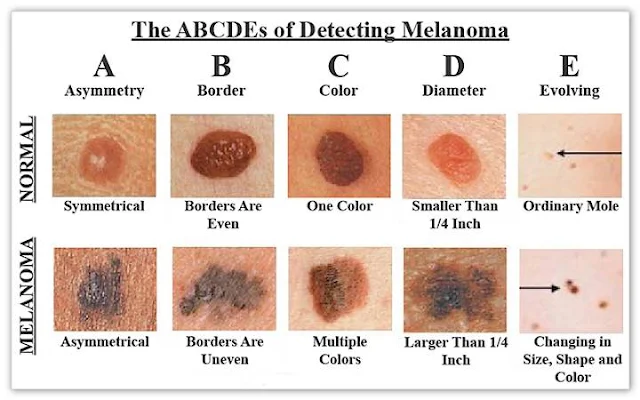Introduction
Skin cancer continues to be a significant public health concern worldwide, with its incidence steadily increasing over the past few decades. Understanding the epidemiology, etiology, types, causes, prevention, and management strategies for skin cancer is crucial for effective prevention and early detection. In this article, we will delve into these aspects, shedding light on this pressing issue.
Epidemiology
Skin cancer is the most common form of cancer globally. According to the World Health Organization (WHO), approximately 9,500 people die from skin cancer every year. The prevalence of skin cancer varies geographically, with higher rates observed in regions with prolonged sun exposure, such as Australia, New Zealand, and parts of Europe and the United States. Moreover, fair-skinned individuals, those with a history of sunburns, and those working outdoors are at higher risk.
Etiology and Types
Sun exposure, specifically ultraviolet (UV) radiation, is the primary environmental risk factor for skin cancer. Prolonged exposure to UV radiation damages the DNA in skin cells, leading to uncontrolled cell growth and the development of cancerous lesions. There are three main types of skin cancer: basal cell carcinoma (BCC), squamous cell carcinoma (SCC), and melanoma.
1. Basal Cell Carcinoma (BCC): BCC is the most common type of skin cancer, accounting for approximately 80% of all cases. It typically appears as a small, flesh-colored or pearly bump on areas regularly exposed to the sun, such as the face, neck, and hands. BCC tends to grow slowly and rarely spreads to other parts of the body.
2. Squamous Cell Carcinoma (SCC): SCC arises from the squamous cells in the outer layer of the skin. It often manifests as a scaly, red patch or a firm, raised bump, frequently occurring on sun-exposed areas like the face, ears, and hands. SCC has a higher risk of spreading to other areas if not detected and treated early.
3. Melanoma: Melanoma is the most aggressive form of skin cancer, originating from the pigment-producing cells called melanocytes. It can develop anywhere on the body and may appear as an unusual mole or a dark spot with irregular borders. If not diagnosed and treated promptly, melanoma can spread to other parts of the body, making early detection vital.
Causes and Risk Factors
Besides excessive sun exposure, several factors contribute to the development of skin cancer. These include a family history of skin cancer, a personal history of skin cancer, having many moles or atypical moles, fair skin, having a weakened immune system, exposure to radiation, and certain genetic syndromes.
Prevention
Prevention is crucial in reducing the incidence of skin cancer. Here are some preventive strategies:
1. Sun Protection: Seek shade during the sun's peak hours, typically between 10 am and 4 pm. Wear protective clothing, including long-sleeved shirts, wide-brimmed hats, and sunglasses. Apply broad-spectrum sunscreen with an SPF of 30 or higher, reapplying every two hours or after swimming or sweating.
2. Avoid Tanning Beds: The use of tanning beds and artificial tanning lamps increases the risk of skin cancer. Avoid using these devices altogether.
3. Self-Examination and Regular Check-ups: Conduct monthly skin self-examinations to detect any changes in moles or new growths. If you notice any concerning signs, such as changes in size, color, or shape, consult a dermatologist promptly. Regular check-ups with a dermatologist are recommended for those at higher risk.
Management Strategies
The management of skin cancer depends on the type and stage of the cancer. Treatment options include surgical excision, Mohs surgery, cryosurgery, radiation therapy, topical treatments, immunotherapy, targeted therapy, and chemotherapy. Early detection significantly improves the chances of successful treatment and reduces the risk of complications.
Conclusion
Skin cancer is a prevalent and potentially life-threatening condition affected by environmental and genetic factors. By understanding the epidemiology, etiology, types, causes, prevention, and management strategies associated with skin cancer, individuals can take proactive measures to protect themselves. Embracing sun-protective behavior, regular self-examination, and timely medical consultation are vital steps in mitigating the risk and promoting early detection, ultimately improving outcomes in the battle against skin cancer.


Post a Comment
Full Name :
Adress:
Contact :
Comment: